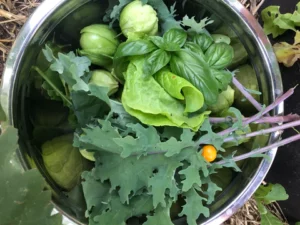The Importance of Local Food

Do you know where your food comes from? Do you know how far it has traveled? You’ve likely heard that it’s better to purchase your food locally than it is to buy food that’s been shipped from far-flung places to reach your grocery aisle. But why?
Let’s start with the economy.
This year has really thrown a punch at the economy, and local, independent businesses are feeling it. In particular, many small-scale farmers have had to get creative to stay afloat. The pandemic has led customers to stop attending farmer’s markets and switch to mail order groceries.
Yet, when we purchase food from local growers, we’re actually boosting our local economy and protecting our food systems. When we rely on faraway food, we add lots of links in the food supply chain, and if any one of them fails, we could go without food. As surprising as it may sound, many components of the U.S. food supply system are relatively fragile, a fact that many residents realized early in the Coronavirus outbreak.
When we buy food from farmers in our region, we eliminate many of those links in the chain. The food grows, gets processed, packaged, and transported to your local grocery store or farmer’s market. This skips more involved processing steps (often including harmful chemicals), and cuts down significantly on transportation. Farmers who live in the region also pay taxes that improve our roads and other services. This is not true for food that comes from further-away places, or online grocery services.
Why is local food better for the environment?
Food grown locally, especially by smaller-scale operations generally utilizes few pesticides and chemicals. Many small farms operate organically, even if they don’t pay to get certified by the USDA. This means fewer harmful compounds get into our water and soil, and our pollinators are spared their sometimes devastating effects. Locally grown food is also more genetically diverse than food grown at the big commercial scale and on huge farms.
The average piece of produce in the grocery store has traveled 1,500 miles to get to you, whereas local produce generally travels less than 100 miles. To make matters worse, we want our food fast! Faster forms of transportation (think airplanes vs. barges) produce significantly more CO2 and other emissions than slower forms. Our food habits are directly impacting climate change.
Local food and you.
Local food is just plain healthier for you than most faraway foods. It’s fresher, so it contains more nutrients, tastes better, and looks better. And it builds community. We build more connection when we buy directly from our farmers.
Access.
Not everyone in our community has equitable access to local food. And poorer parts of the U.S. generally have disproportionately easier access to fast food than healthy food. We also need to acknowledge that buying local food takes more work and more planning. You can’t get cheap frozen dinners from your local farmer.
In La Plata County, we’re fortunate to have some help broadening this access. Food for All SW CO is a partnership between the Good Food Collective, Manna (Durango’s Soup Kitchen), Pine River Shares, and Pine River Garden Club that put together mini gardening kits for those needing help with garden start-up costs. Manna has an onsite garden that feeds its clients and boosts its self-suffiency. The Animas Valley Grange collects extra produce from area gardens and distributes it to families in need. And of course, the Durango Farmers Market is Durango’s hub for local food every Saturday. DFM participates in SNAP and the Double Up Food Bucks Program, which doubles the spending power for customers using EBT cards.
So what?
The next time you need some tomatoes or apricots, we ask that you think about where you’re getting them from. Is there a local source that you could use? Is it really that much simpler to buy from the grocery store? Can your dollars work double duty by staying in your community? And who else could use some tomatoes? Can you take any micro (or macro) actions toward food justice?
Let us know your thoughts! We’d love to hear from you.
Some helpful resources:
